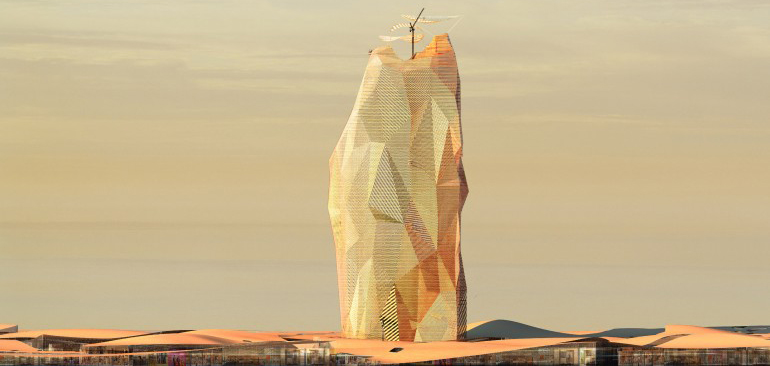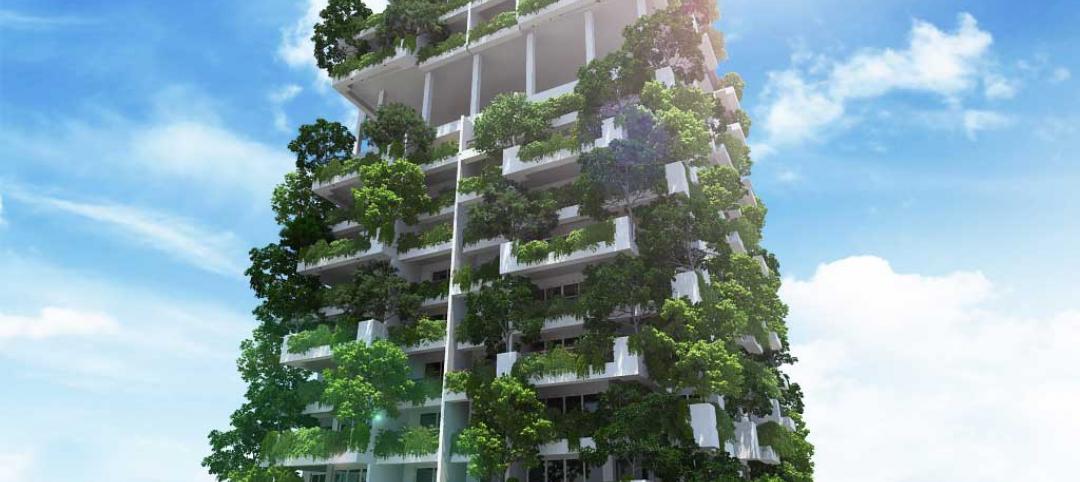Building in the Sahara seems to be in the minds of many French architects lately. Aside from Parisian practice XTU Architects’ sand-and-bubble building method for shelters in one of the world’s most inhospitable landscapes, OXO Architectes and Nicolas Laisné Associés—both also from the greater Paris area—revealed their own proposal for the Sahara, a futuristic mixed-use tower called The City Sand Tower, Gizmag reports.
Relying on rainwater collection, solar power, and geothermal energy, the designers aim to make this so-called “vertical city” a sustainable one. The project description says that the building will be 1,476 feet with a total floor space of 192 acres.
According to renderings released by OXO Architectes, agriculture will be planted in a central tower inside the main structure, so that produce is protected from the harsh desert conditions.
Around 22% of the structure’s space will be allocated to office space, 17.5% for hotel space, 15% for housing, and the remaining available space for a shopping center, sports area, museum, spa, dining locations, and conference rooms. The cherry on top is a meteorological observatory and a heliport.
The firms said they imagine the project to start construction in 2025, with construction phased over 50 years, Gizmag reports.
Read the full story at Gizmag.
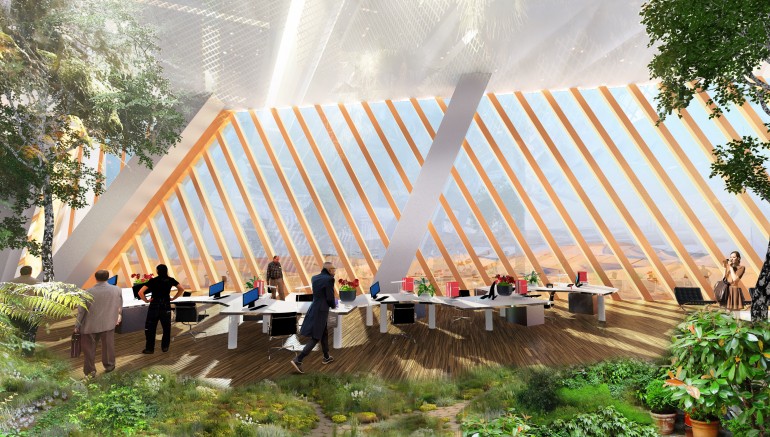
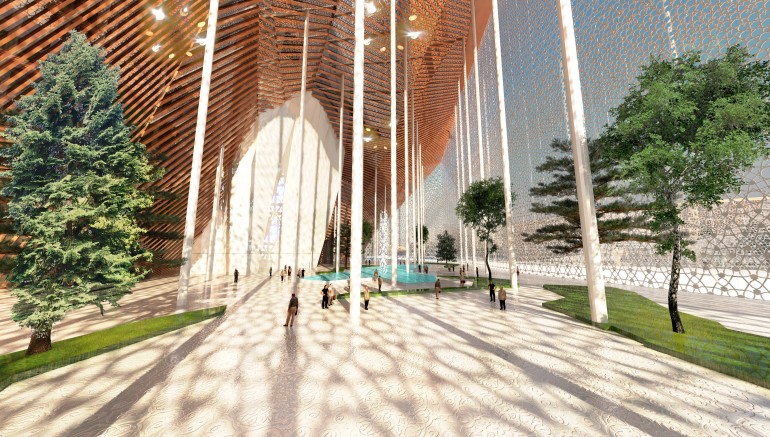
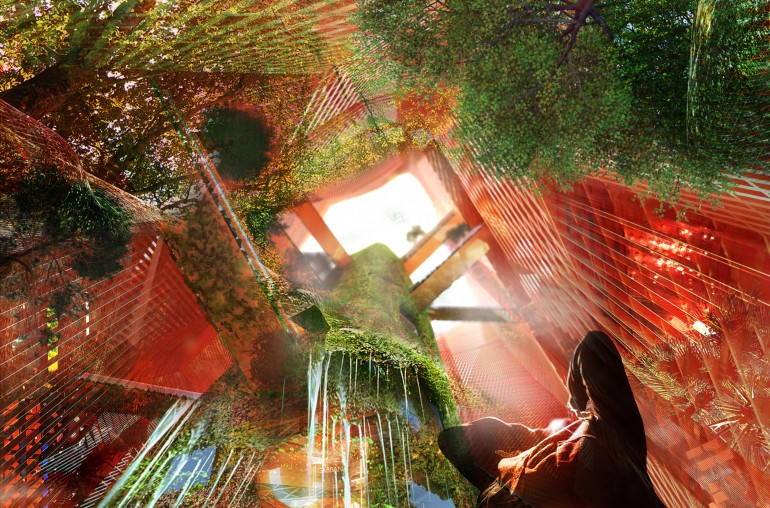
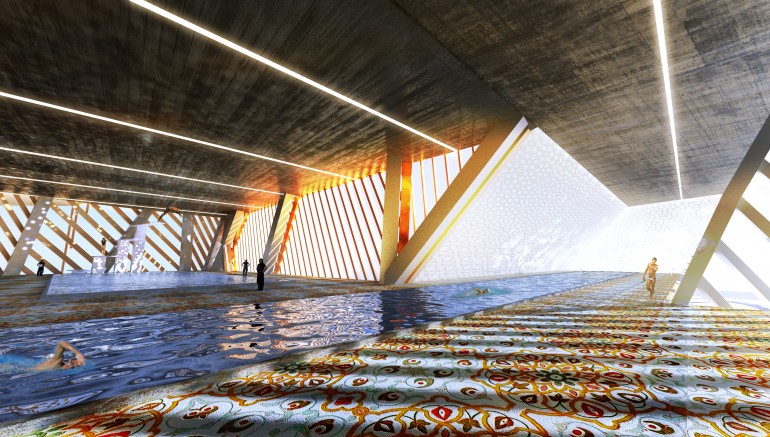
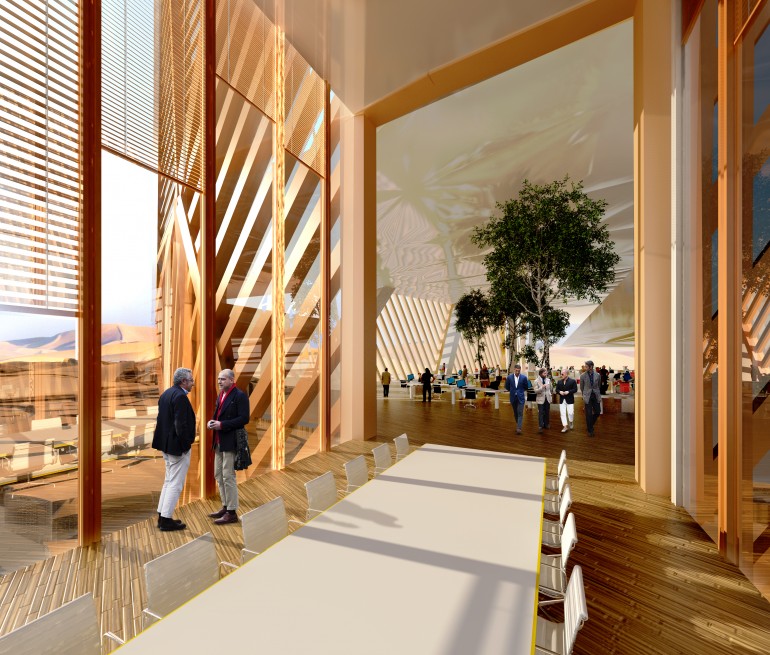
Related Stories
| Jan 30, 2014
See how architects at NBBJ are using computational design to calculate the best views on projects [video]
In an ideal world, every office employee would have a beautiful view from his or her desk. While no one can make that happen in real life, computational design can help architects maximize views from every angle.
| Jan 29, 2014
Richard Meier unveils 'urban courtyard' scheme for Mexico City towers
A grand atrium, reaching some 30 stories, highlights the contemporary, bright-white design scheme unveiled this week by Richard Meier & Partners for a new mixed-use development in Mexico City.
| Jan 28, 2014
2014 predictions for skyscraper construction: More twisting towers, mega-tall projects, and 'superslim' designs
Experts from the Council on Tall Buildings and Urban Habitat release their 2014 construction forecast for the worldwide high-rise industry.
| Jan 23, 2014
Adrian Smith + Gordon Gill-designed Federation of Korean Industries tower opens in Seoul [slideshow]
The 50-story tower features a unique, angled building-integrated photovoltaic (BIPV) exterior designed to maximize the amount of energy collected.
| Jan 21, 2014
Comcast to build second Philadelphia skyscraper, with Norman Foster-designed tower [slideshow]
The British architect last week unveiled his scheme for the $1.2 billion, 59-story Comcast Innovation and Technology Center, planned adjacent to the Comcast Center.
| Jan 21, 2014
2013: The year of the super-tall skyscraper
Last year was the second-busiest ever in terms of 200-meter-plus building completions, with 73 towers, according to a report by the Council on Tall Buildings and Urban Habitat.
| Jan 3, 2014
World’s tallest vegetated façade to sprout in Sri Lanka [slideshow]
Set to open in late 2015, the 46-story Clearpoint Residences condo tower will feature planted terraces circling the entire structure.
| Dec 31, 2013
BD+C's top 10 stories of 2013
The world's tallest twisting tower and the rise of augmented reality technology in construction were among the 10 most popular articles posted on Building Design+Construction's website, BDCnetwork.com.
| Nov 13, 2013
New AISC Guide for Stability Design of Steel Buildings Now Available
Design professionals now have a valuable new resource on practical applications for stability design
| Nov 4, 2013
Historic shape producer catalogs added to AISC ePubs
The American Institute of Steel Construction (AISC) has added more historic documents to its online ePubs collection for AISC members. The latest addition is a collection of shape producer catalogs dating back to 1885. The collection is available at www.aisc.org/epubs in the historic shape producer section. This collection is part of AISC's effort to preserve unique industry documents before they are lost to age-related deterioration.


